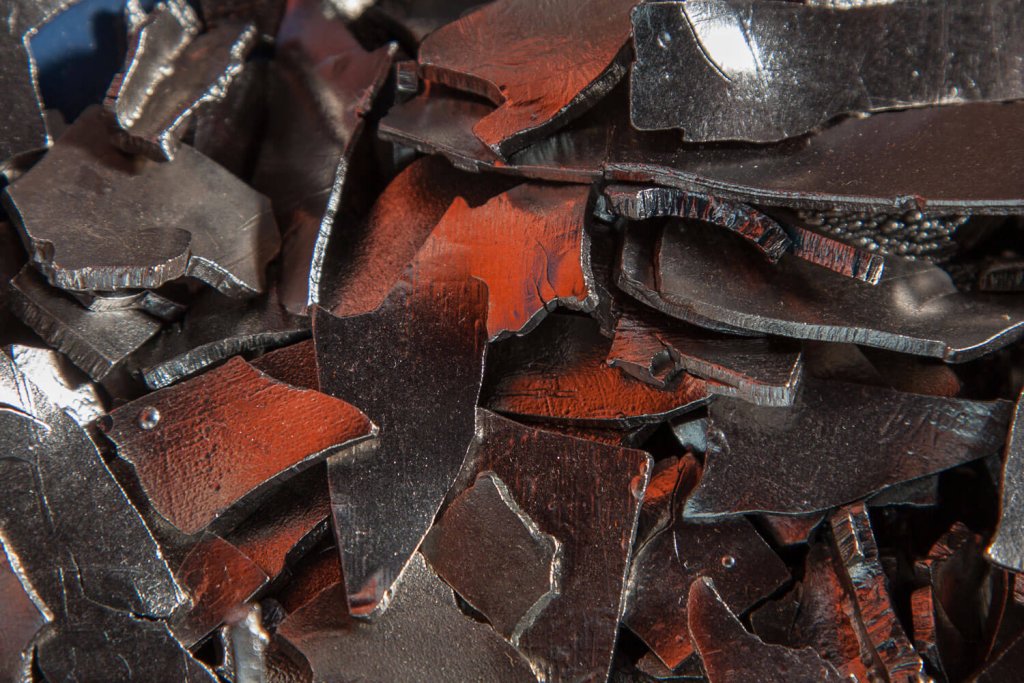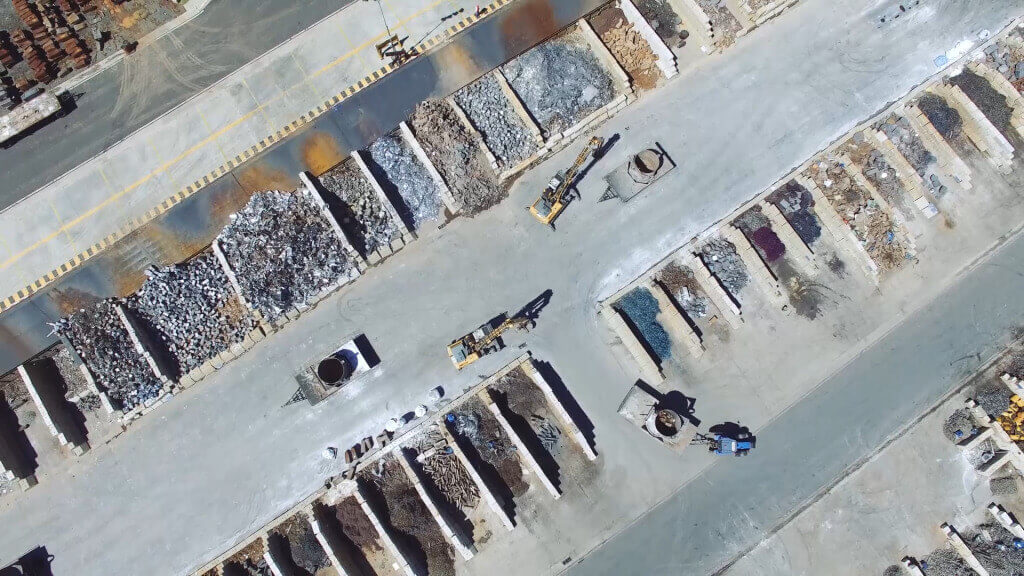Circular Economy in the HPM Division: From waste to value
“A sustainable circular economy is one in which society reduces the burden on nature by ensuring that resources can be used for as long as possible.”[1] Efficient recycling of resources has long been a major concern for us here at the High Performance Metals (HPM) Division. For this reason, the circular economy represents a key field of action for us, which we would like to develop further as one of the four supporting pillars in our sustainability framework inSPire.
OUR MOTIVATION
HPM supplies industries that rely on high-performance steel and other high-performance materials. These include the automotive and aerospace industries, the energy sector, mechanical engineering, consumer goods, and special applications. We aim to ensure reliable supplies to our customers in a sustainable way long into the future. For us, this means a shift from a linear to a circular economy, which involves keeping resources in circulation for as long as possible instead of constantly using new ones. In addition to the obvious environmental benefits, an efficient circular economy can also support a supply of raw materials that is independent of global political developments.
One of steel’s major strengths is that it can be recycled again and again without any loss of quality. This holds enormous potential for saving resources as well as CO2. To secure the supply of critical raw materials in the future, we are constantly working on new ways to recycle various materials. These efforts are not new to the Group — for many years now, our subsidiaries have been working on the circular economy as part of various projects. This not only saves cost and allows us to protect against possible supply bottlenecks, but also helps us to operate responsibly in the interests of future generations.
ONE GOAL, MANY PATHS
The field of the circular economy covers a wide range of topics and measures. We want to utilize resources to their full potential, which is why we are pursuing projects in multiple areas — always with the goal of an efficient circular economy in mind.
- We manufacture our high-performance materials by recycling, and on the basis of metal scrap.
- We conserve resources through the economical and efficient use of raw materials.
- We manufacture products for our customers worldwide. Through efficient logistics, we strive to return the highest-quality materials to our plants with as little CO2 emissions as possible.

THE 4 Rs: REDUCE, REUSE, REMANUFACTURE, RECYCLE
Reduce, reuse, remanufacture, recycle — these are the four magic words of the circular economy in the steel industry. We at the HPM Division also base our activities on these pillars identified by the World Steel Association.
- Reduce: The first step toward sustainable business is always to “reduce”: In our case, this means reducing the use of raw materials and other resources for a more efficient steel production.
- Reuse: Once raw materials are in circulation, they should be kept there for as long as possible. The reuse of materials therefore plays a central role.
- Remanufacture: If materials can no longer be reused unchanged, the next step is to return long-lived used steel products to as-new condition. One way to do this is by remanufacturing worn tools.
- Recycle: As a materials manufacturer, we devote a significant proportion of our initiatives to recycling. As mentioned above, we can benefit from steel’s unique recycling properties. Steel products can be remelted and used to produce new steel. With a recycling rate of 81%, we are already making an important contribution to the responsible use of resources.
THE CIRCULAR ECONOMY IN THE HPM DIVISION
The Circular Economy Team helps to further strengthen cooperation between the individual companies within the HPM Division. It also identifies potential new recycling routes for various materials and provides a platform where experts in different fields can come together.
After a detailed analysis phase together with experts from the division, four major fields of action in the circular economy area were identified within the framework of inSPire:
- Material / scrap cycles: For melt shops, metal scrap is the most important raw material and a valuable commodity. The creation of closed material cycles both internally and with customers is therefore crucial to ensure the sustainable security of supply of this key material. This also reduces the consumption of primary raw materials and improves CO2 balance. Our goal is to achieve a share of at least 90% recycled raw materials in production by 2030. This is an increase of 9% compared to the starting year 2019.
We are working in a variety of ways to meet this target and are also using state-of-the-art technologies to further develop this field of action. Additionally, we are reviewing the recycling of end-of-life tools (EOL tools) in order to be able to recover raw materials from old tools in the future.
- Alternative raw material sources: Alloy elements such as Nickel, Cobalt, and Manganese, for example, are essential components of our products, along with steel scrap. However, the availability of these critical raw materials is subject to several influences: from global political developments to societal changes. For example, the CO2 transformation in steelmaking from blast furnaces to electric arc furnaces is bringing about changes in raw material needs. To give another example, the growing importance of e-mobility is leading to increased demand for Nickel, Cobalt, and Graphite because these elements are processed in the batteries of e-vehicles.
We therefore choose alternative and secondary input materials (where possible). This includes, for example, the recycling of batteries or grinding sludge from our customers. In the long term, we would like to replace a significant portion of our primary raw materials with secondary raw materials in this area as well.

- Recycling of by-products: The production of high-performance materials produces by-products such as scale, dust, and slag. And these products also contain valuable alloy elements, which we aim to recycle into our products through internal circuits. That is why we are constantly developing innovative, optimized processes to recover the elements contained in the by-products.
In this context, we attach great importance to sensibly combining and recycle any waste generated, and to keep valuable metals contained in EAF (electric arc furnace) dust, for example, within the company for further processing.
- Zero waste: Much of what looks like waste at first glance can be reused with added value. We want to make the best possible use of resources and therefore think one step ahead: Waste and production residues should be minimized and, wherever possible, recycled. The key to achieving this is cooperation across the boundaries of industry segments — what seems like worthless leftovers to one industry can be of great value to another and can be reprocessed. We are working intensively on expanding this field of action in order to move closer to the goal of “zero waste”. This includes the development of concepts for hazardous and non-hazardous waste.
We have already reported more on our fields of action here.
OUR PLAN FOR THE FUTURE
For us, ecological sustainability and economic success go hand in hand. We see it as our responsibility and a great opportunity to initiate and actively pursue effective changes in the resource-intensive sector of the steel industry. The introduction of the circular economy has a great deal of potential to achieve improvements throughout the supply chain and thus both act in a more ecologically sustainable way and save costs.
Our long-term priority is the sustainable supply of key materials while maintaining low working capital. We always strive to offer our customers products of the highest quality. We attach great importance to a good customer relationship, since close cooperation often opens new doors to jointly develop circular economy systems and, as a result, reduces the carbon footprint of products. Environmental protection has always been a top priority for us.
For example, we operate in accordance with international environmental and energy management standards such as ISO 14001 and ISO 50001 in our plants. We also pursue a reduction of our disposed waste with the help of state-of-the-art waste management measures that bring us even closer to our goal of achieving zero waste. By means of process and product developments, we are continuing to anchor circular economy principles more deeply within HPM and communicate them to the outside world via our customers and partners.
THE TEAM BEHIND THESE INITIATIVES
Such a comprehensive, challenging topic requires a strong team: The colleagues have dedicated themselves to the Circular Economy Division and are drawing from their breadth of diverse knowledge to make our use of resources and key materials more sustainable. The team aims not only to drive the development of the circular economy within HPM, but also to inspire other stakeholders to keep critical raw materials in circulation for as long as possible in order to ensure future supply. You can read more about the team, their day-to-day work, and how they work together here.
And because knowledge grows when it is shared, we are planning internal company trainings on the topic of the circular economy in the future. As a first step, we want to create awareness for measures such as recycling and provide our employees with tools that can be used in their everyday lives.
A MODEL WITH A FUTURE
HPM has long been aware of the relevance and great potential of the circular economy for ecological and economic sustainability. The circular economy field of action therefore drives the recycling of critical raw materials and other resources. It provides space for exchange and supports cooperation between the individual companies. Complex problems are also dealt with jointly. In this way, we can benefit from a real synergy and drive sustainable policy forward both within HPM and together with external partners.
[1] Source: World Steel Association; https://worldsteel.org/circulareconomy/
